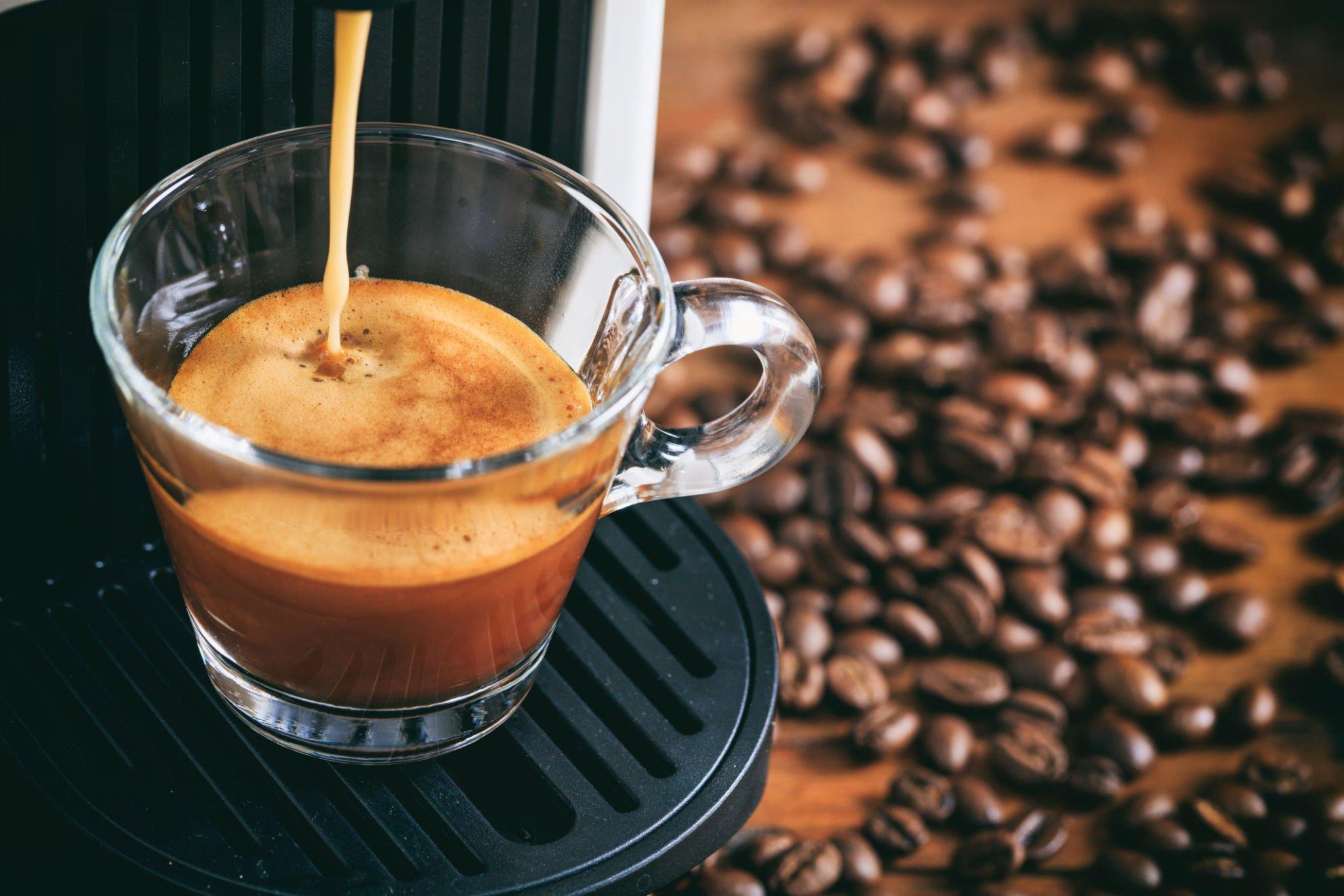Discover 5 reasons why espresso can be bitter and 3 easy fixes to make delicious espresso every time. Learn how to make the perfect cup of espresso today!
Are you tired of your espresso tasting bitter? Don’t worry, you’re not alone! Many people struggle to make a delicious cup of espresso, but with the right knowledge, you can make a cup that’s smooth and flavorful.
In this article, we’ll discuss 5 reasons why espresso is bitter and 3 fixes to make it taste delicious. So, if you’re ready to learn how to make a delicious cup of espresso, let’s get started!
What Causes Espresso to be Bitter?
There are a few factors that can cause espresso to be bitter. Over-extraction of the espresso, or pulling too much flavor from the espresso grounds, can cause the espresso to be too bitter.
Other factors that can cause espresso to be bitter include using too fine a grind size, using a grind size that is too coarse, using too much pressure, using water that is too hot and using too much coffee in the shot.
How to Adjust the Grind Size for a Better Espresso Taste
Adjusting the grind size of the espresso can make a huge difference in flavor. The ideal grind size for espresso should be between powdery and sandy. If the grind size is too fine, the espresso will be over-extracted and too bitter.
If the grind size is too coarse, the espresso will be under-extracted and taste weak and sour.
How to Adjust the Extraction Time for a Better Espresso Taste
Adjusting the extraction time of the espresso can also make a big difference in the overall flavor. The ideal extraction time for espresso should be between 20-30 seconds. If the extraction time is too short, the espresso will be under-extracted and weak.
If the extraction time is too long, the espresso will be over-extracted and bitter.

How to Adjust the Water Temperature for a Better Espresso Taste
The temperature of the water used to make espresso can also have a big impact on the flavor. The ideal temperature for espresso should be between 197-203°F (90-95°C). If the water is too hot, the espresso will be over-extracted and bitter.
If the water is too cold, the espresso will be under-extracted and weak.
How to Adjust the Pressure for a Better Espresso Taste
The pressure used to brew espresso can make a difference in the overall flavor. The ideal pressure for espresso should be between 8-10 bars. If the pressure is too low, the espresso will be under-extracted and weak.
If the pressure is too high, the espresso will be over-extracted and bitter.
How to Make Delicious Espresso with the Right Equipment
Making delicious espresso requires the right equipment. You will need an espresso machine, a good quality burr grinder, an espresso portafilter, and a tamper.
You will also need a good quality scale to measure out the right amount of espresso.

How to Make Delicious Espresso with the Right Technique
- Use freshly roasted coffee beans: The quality of your espresso starts with the beans. Make sure you’re using freshly roasted coffee beans, preferably within two weeks of the roast date. Stale coffee will result in a bitter taste and lack of flavor.
- Grind your beans just before brewing: Espresso requires a fine grind, and the coffee should be ground just before brewing to ensure maximum freshness. A good rule of thumb is to use 7 to 8 grams of coffee per shot of espresso.
- Use filtered water: The quality of the water you use can greatly affect the taste of your espresso. Use filtered water to ensure a clean, pure taste.
- Preheat your equipment: Preheat your espresso machine and cups to ensure the water temperature stays consistent throughout the brewing process. This will result in a smoother, more flavorful espresso.
- Use the right amount of pressure: The pressure used to extract the espresso should be between 9 and 10 bars. Too little pressure will result in a weak and watery espresso, while too much pressure will result in a bitter taste.
- Time your shot: A perfect shot of espresso should take between 20 and 30 seconds to extract. If it takes less time, the espresso will be too weak, and if it takes longer, the espresso will be too strong and bitter.
- Serve immediately: Once you’ve extracted your shot, serve it immediately. Espresso loses its flavor and aroma quickly, so don’t let it sit for too long.
By following these tips, you’ll be well on your way to making a delicious espresso with the right technique.
Remember, practice makes perfect, so keep experimenting and tweaking your technique until you find the perfect recipe for your taste buds.
Frequently Asked Questions (FAQ)
Why is espresso so bitter?
Espresso is often bitter due to an imbalance of coffee-to-water ratio. The coffee-to-water ratio should be 1:2, meaning 1 gram of coffee for every 2 grams of water.
If the coffee-to-water ratio is too high, the espresso will be bitter.
What is the ideal temperature for espresso?
The ideal temperature to brew espresso is between 195-205 degrees Fahrenheit. If the temperature is too low, the espresso will be weak and watery, while if it is too high, the espresso will be bitter.
How can I make espresso less bitter?
You can make espresso less bitter by first ensuring the coffee-to-water ratio is correct, then making sure the temperature of the water used to brew the espresso is within the optimal brewing range.
You can also use a finer grind or less coffee beans to reduce bitterness.
Can I use cold water to make espresso?
No, you should not use cold water to make espresso. Cold water does not extract flavor and oils from the coffee beans, resulting in a weak and watery espresso. You should always use hot water to make espresso.
What type of coffee beans should I use to make espresso?
Dark roast coffee beans are usually the best choice for making espresso as they have a more robust flavor and are less acidic.
Medium roast beans are also an option, although they may produce a slightly milder espresso.
What is the ideal grind size for espresso?
The ideal grind size for espresso is a fine grind. A coarse grind will result in an over-extracted espresso, while a fine grind will extract the flavors and oils from the coffee beans without extracting too much bitterness.
Does espresso need to be stirred?
No, espresso does not need to be stirred. However, stirring espresso can help mix the flavors and oils better, resulting in a more balanced flavor.
What does it mean to “bloom” espresso?
To “bloom” espresso means to wet the coffee grounds with a small amount of water before beginning to brew the espresso.
This helps to release the flavors and oils from the coffee grounds, resulting in a richer flavor.
Final Word
Espresso can be a delicious treat, but it can also be bitter if not made correctly. Fortunately, there are a few simple steps you can take to make sure your espresso is always delicious. By understanding the five reasons why espresso is bitter and the three fixes to make it delicious, you can enjoy a perfect cup of espresso every time.
So, don’t be afraid to experiment and find the perfect espresso for you!

My name is Michael Jones, and I’m a coffee enthusiast and expert based in the US. I run my own coffee shop, and I’m passionate about everything related to coffee. On my website, Coffee and Comfort, I share my knowledge and tips to help you elevate your coffee experience. Whether you’re a beginner brewer or a seasoned barista, I have something for everyone. I’ll teach you how to choose the right coffee beans, grind them perfectly, and brew a delicious cup of coffee at home. I’ll also share tips on how to make different coffee drinks, like lattes, cappuccinos, and espressos. But more than just teaching you about coffee, I want to help you create a coffee lifestyle that you love. Coffee is more than just a beverage; it’s a way to connect with people and enjoy the simple things in life.
